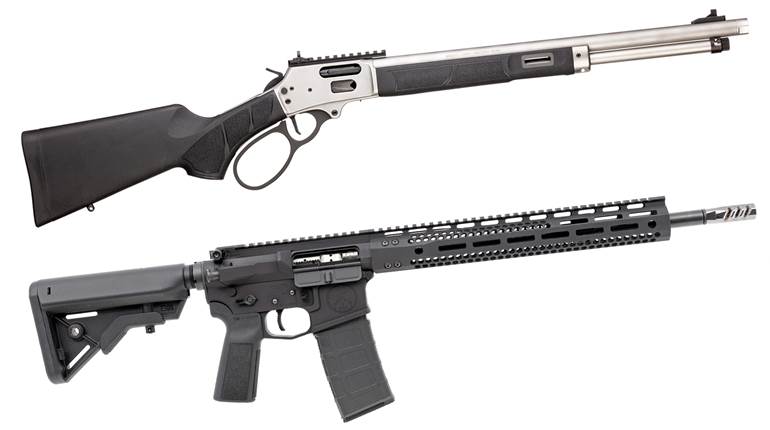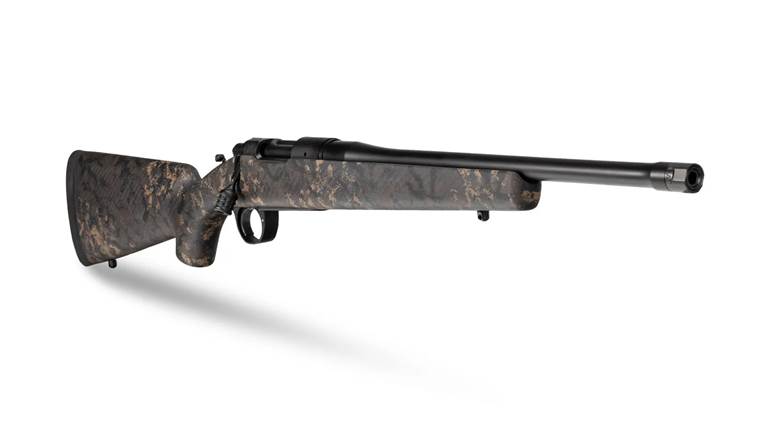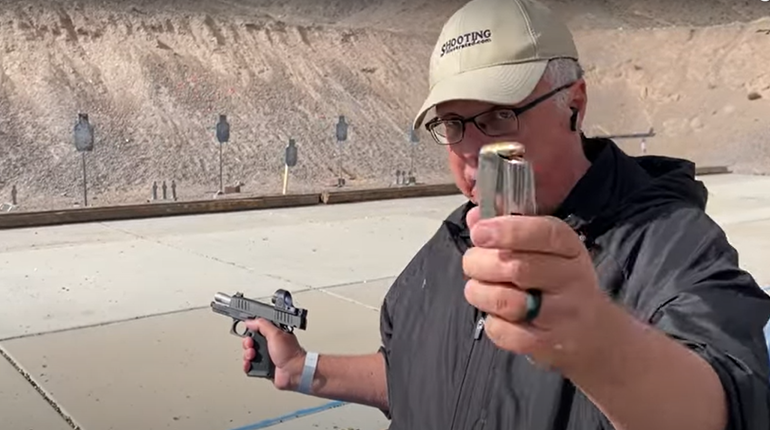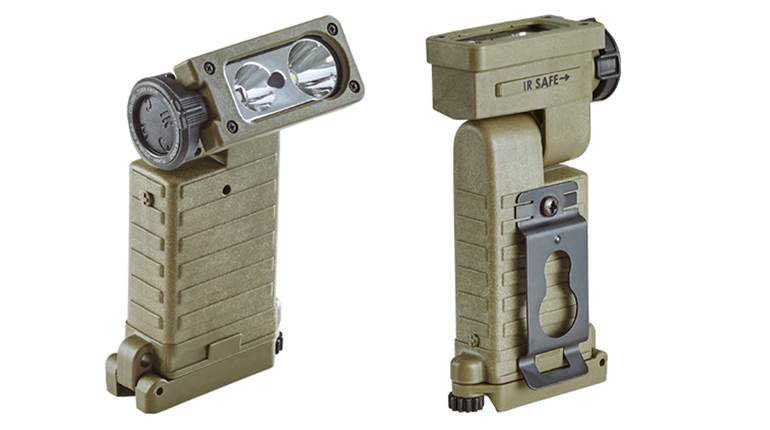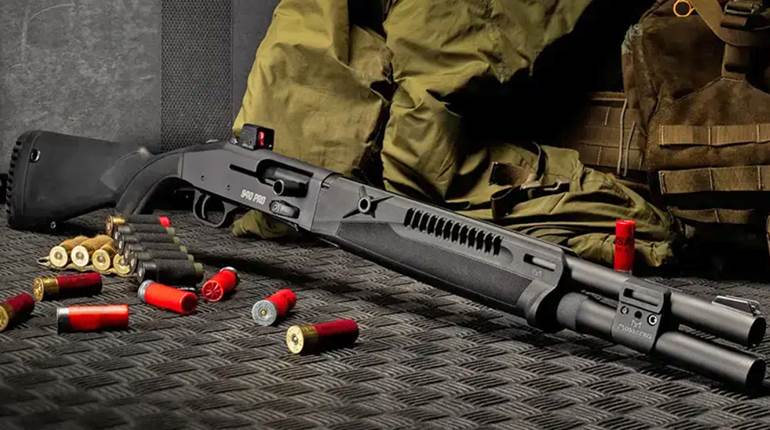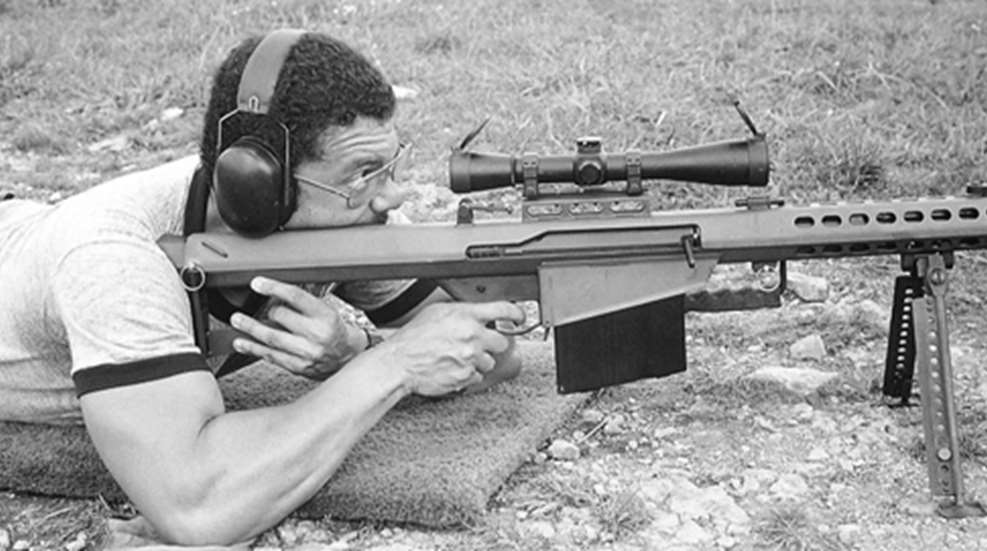
Originally published in the November, 1995 issue of American Rifleman.
In every performance category, the .50 BMG easily outclasses any conventional rifle cartridge. With 12,000 to 14,000 ft.-lbs. of muzzle energy, the .50 BMG is more than twice as powerful as the .458 Win. Mag. and some 1 1⁄2 times as powerful as the .460 Wby. Mag.
Such power would allow a hunter to harvest any game animal on earth; and indeed, .50 cal. rifles have been used for hunting, primarily for extreme long-range shots. Lynn McMurdo, veteran hunter, .50 cal. shooter and custom bulletmaker, has taken game at more than a mile.
However, the scarcity of .50 cal. hunting bullets (McMurdo and Hornady are virtually the only sources) and legal restrictions in some areas limit the .50’s hunting use.
For most serious shooters, however, the appeal of the .50 BMG lies in its unsurpassed potential as an ultra long-range target cartridge. And what makes the .50 BMG so suitable can be summed up in two words: ballistic coefficient. Ballistic coefficient (BC) is a numerical representation of the aerodynamic efficiency of a projectile. For a given projectile velocity, the higher the ballistic coefficient, the less it will drop or be deflected by the wind. So what’s this got to do with .50 cal. shooting?
Well, according to the laws of physics, the larger the bullet diameter, the larger the potential BC. And indeed, the current crop of .50 cal. bullets has considerably higher BCs—some as high as 1.2—than any smaller-diameter bullets currently available.
Okay—but what difference does this make in real terms?
The accompanying table shows the long-range drop and wind deflection differences between a 220-gr. .30 cal. match bullet with a BC of .65 and an 800-gr. .50 cal. bullet with a BC of 1.0. The ballistic properties of high-BC bullets clearly make accurate estimations of drop and wind deflection—so important in long-range shooting—less critical.
Of course, the theoretical benefits of high BC values can be realized only if the projectile launching system—action, barrel, sights and cartridge components—are at a high level of development. Only in recent years have all the necessary elements reached such a level.
Early .50 cal. rifles were conversions of old antitank rifles or custom-made rifles built from scratch. Currently, however, there are about 20 different .50 cal. rifles available from about a dozen or so commercial manufacturers.
The majority are bolt-actions. Some are of a “conventional” design, simply resembling an enlarged two- or three-lug sporting rifle action. The Harris/McMillan M87 and M87R rifles, for example, both feature a cylindrical 2" diameter receiver and a full-diameter bolt with two forward lugs. A very similar action design is utilized on the two excellent rifles produced by McMillan Brothers (McBros) Rifle Co. (not the same as Harris/McMillan).
Many of Ron Freshour’s .50s, as well as the Rib Mountain Arms Model 92, also have a “conventional” look. American Arms and Ordnance markets a “conventional” action of about 2" diameter. The contact faces of the full-diameter bolt’s two forward lugs are angled at 45° rather than perpendicular to the bolt body, which is claimed to give greater action strength.
A number of bolt-action .50s are of shell-holder design. These use a recessed, flanged bolt face to retain the cartridge case by its extractor groove. Loading is accomplished by removing the bolt, inserting the cartridge head into the recessed bolt face, and reinserting the bolt and cartridge into the receiver. Unloading requires the same process.
Shell-holder designs were initially developed as the result of early military specifications for a .50 cal. rifle that mandated a length limit. They can be made shorter and lighter than a conventional bolt-action. Moreover, when maintaining a fixed length is a concern, a shorter action allows a longer barrel. Shell-holder actions are available from a number of manufacturers, such as State Arms Gun Co.; whole guns of this type include the Rib Mountain Arms Model 93, the Harris/McMillan M88, the Ultimate Accuracy Arms rifle (formerly the AMAC Model 5100) and rifles made by O.J. Buckheim and Northwest Arms Distributing.
Bullpups represent a trend among bolt-action .50s, offering a way to reduce gun weight and length without resorting to ballistically inefficient shorter barrels. While “standard” configuration .50s are typically more than 50" long and weigh 30 lbs. or more, bullpups can usually shave off 10" and five to 10 lbs.
Many bullpups are an “integrated” design, the receiver and stock forming one unit. The Barrett Model 90, the Ballard, the LAR Grizzly 50, and the Sugg are examples. While the first three use conventional shell-holder bolt actions, the Sugg is notable for having a titanium action employing a horizontally sliding breechblock as found in some artillery pieces.
There are currently two commercial semi-auto designs. The more famous of these—in fact, probably the best-known .50 rifle of any type—is the Barrett M82A1 Light Fifty. The brainchild of Tennessee gun designer Ronnie Barrett, the Barrett uses a cam-actuated rotating three-lug bolt in a short-recoil action. It is a relatively simple design that, like many current military and civilian arms, makes extensive use of heavy-gauge steel stampings.
The Barrett M82A1 rifle has found wide favor among governmental and military units here and abroad, thanks to its rugged design, easy takedown, and the high rate of fire provided by its semi-auto action and 10-round magazine.
A semi-auto .50 is also manufactured by Pauza Specialties. In contrast to the Barrett, the Pauza P-50 is machined completely from bar stock. It is a gas-operated rifle derived from the Soviet Simonov design of World War II and uses a five-round magazine. The Pauza is quite close to the Barrett dimensionally, with a 29" barrel and a weight of 30 lbs. Pauza also manufactures a carbine version of its .50 cal. semi-auto, with a 24" barrel and a weight of 25 lbs.
A prototype semi-auto .50 was introduced by McMillan Brothers (McBros) Rifle Co. at previous SHOT Shows. The gas-operated gun uses a vertical sliding wedge for lockup, weighs 32 lbs. and is 56" long. It uses the Barrett 10-round magazine.
Until fairly recently, anyone wishing to build a custom .50 would have been limited to surplus M2 machine gun barrels. Such barrels were fine for the rather modest accuracy requirements of full-auto fire, but lacked the match quality desired by serious long-range shooters.
Today, there are about a dozen custom barrelmakers catering to the .50 cal. crowd, including such well-known names as Krieger, H-S Precision, McGowen, Lilja, Lothar Walther and Obermeyer, as well as others that may be relatively new to many in the shooting community, such as Badger Barrels, Pac-Nor, K&P Gun Co. and Apex Rifle Co.
Bore and groove dimensions for .50 barrels are perhaps more critical than for other small-arms cartridges, because the bullets used in loading the .50 BMG are generally not of traditional lead-core copper-jacket construction. Some of these are made of hard materials such as leaded steel, and thus do not upset to fill the bore’s grooves like softer conventional bullets do. This means, in turn, that for maximum accuracy, such factors as bullet diameter, bearing length, land and groove diameter, and land width must be more rigorously matched.
Because .50 shooting is a relatively new endeavor, there has been some experimentation in bullet diameters, bore sizes, barrel lengths and rifling twists; and one can often special-order specific twists and bore sizes from many custom barrelmakers. For the most part, however, barrel dimensions have become fairly standardized. Barrels are generally around 30", with a bore dimension of .500" and groove dimension of .510". Most of the top-quality barrels are cut-rifled in six or eight grooves, with twists from 1:14" to 1:16" (although 1:15" has now emerged as the "standard" twist).
Barrel contours tend to be heavy, especially on the unlimited bench-rest guns, where straight tubes up to 2" diameter are common. Barrels can be had in either chrome-moly or stainless, the former being preferred for its greater resistance to wear from hard bullets.
No .50 barrel would be complete without an effective muzzle brake. The .50 BMG’s recoil is such that a muzzle brake is a necessity, not a luxury, especially in some of the lighter (20-25 lb.) rifles. The .458 Win. Mag. in a 10-lb. rifle, for example, generates some 6.1 ft.-sec. of recoil momentum, and 19.8 f.p.s. recoil velocity. In a 24-lb. .50 rifle, a load similar to standard ball ammo (say, a 640-gr. bullet at 2900 f.p.s.) will generate nearly 12.3 lb.-sec. of recoil momentum and 16.6 f.p.s. of recoil velocity.
With an effective muzzle brake, this same gun and load may produce as little as 6 ft.-sec. of momentum, and 8 f.p.s. velocity—less recoil velocity than a 7-lb. rifle in .243 Win.—and it’s recoil velocity that hurts you. There are many different muzzle brake designs—clamshell, perforated can, and so forth. The most effective are said to cut recoil up to about 75%.
In general, .50 cal. rifles require the same accessories as other, more conventional rifles—cleaning rod and solvent, brush, patches, lubricating oil and so forth. There are, however, some accessories of special importance to .50 shooters.
Ear protection is always a must when doing any kind of shooting, but is particularly critical for .50 shooters. Not only is the muzzle blast of a .50 more intense than that of lesser calibers, but the muzzle brakes found on such rifles create a substantial backblast. Shooting a .50 without ear protection is sure to result in immediate and permanent hearing damage.
A second useful, in fact almost necessary, accessory for .50 shooters is a rangefinder. Since .50 rifles can shoot accurately up to a mile and beyond, some sort of range estimation device is important. While there are several relatively inexpensive commercial units available, serious long-range shooters prefer military surplus rangefinders by such manufacturers as Barr and Stroud, Wild and Carl Zeiss-Jena. When properly adjusted and used, these give 99% or better accuracy out to 1,000 yds. and more. The only drawbacks are the cost—from $800 to over $2,000—and the limited availability of such units.
Some shooters have opted for Soviet military surplus laser rangefinders. While highly accurate, even to extreme range, these are even more expensive ($4,000 or so) than the optical rangefinders, and the laser beam used is not "eye safe."
Scopes are de rigueur for .50 rifles, although the Barrett does come with adjustable iron sights for emergency use. Scopes for .50 rifles have to be tough enough to withstand unusual recoil forces, while having the optical clarity and range of windage and elevation adjustment required for ultra-long-range shooting. Many shooters also desire rangefinding reticles.
Leupold’s Mark IV series scopes, with their 140 minutes of elevation adjustment, are the overwhelming favorites for .50 shooting and are standard equipment on several manufacturers’ guns, such as the Barrett M82A1. Other popular optics include tactical/police scopes from Leupold, Shepherd, Swarovski and Bausch & Lomb. Scope magnifications vary from about 10X (on police or military weapons) up to 36X for serious long-range target use.
A high rate of scope breakage is associated with .50 cal. rifles, generally attributed to their heavy recoil. Paradoxically, it may be that the very effectiveness of the muzzle brakes used on such rifles actually exacerbates the problem.
Some, such as Eric Williams, former editor of the Fifty Caliber Shooters Ass’n journal, Very High Power, have theorized that the forward acceleration caused by the muzzle brake creates a “jerky” double recoil impulse, which stresses the scope in ways it was not designed to handle.
So where does one shoot a .50 cal. rifle—and at what? Well, it helps to have a good-size range—500 yds. or more, preferably a thousand, even a mile if you can do it safely. Shooting a .50 at 100 yds. is rather like running a Ferrari 308 GT in a 25-mile-per-hour zone—it just plain doesn't satisfy.
The Fifty Caliber Shooters Ass’n (FCSA) is the body sanctioning organized .50 cal. competition in this country. Each year, the FCSA organizes a national championship match, shot at 1000 yds. using the standard NRA 600-yd. high-power target, which has a 36" black and 12" 10-ring. This national match, which has been held at various locations and dates in the past, found a permanent home in 1994 at the NRA Whittington Center’s 1000-yd. Palma range. The match is scheduled to take place every July 4th weekend.
In this two-day event, each contestant shoots six 5-shot targets, both for score and for group. Shooters compete in two classes: Light Gun, for rifles weighing less than 32.5 lbs. and chambered for the standard .50 BMG cartridge, and Heavy Gun, for guns weighing 32.5 to 50 lbs. and chambered for any cartridge based on the .50 BMG case.
The 1995 national championship match saw the establishment of a new Heavy Gun record—a 3.2395" 5-shot group at 1,000 yds., fired by Craig Taylor of Vancouver, Washington with a custom bolt gun. This year's match also saw the introduction of the Unlimited class, which permits guns of any weight, firing cartridges based on any case but still using a .510"-diameter projectile.
Those interested in finding out more should contact the Fifty Caliber Shooters Ass’n (FCSA), an NRA-affiliated club. The FCSA and its members have brought the sport to the high level of development it enjoys today. The FCSA publishes a technically sophisticated quarterly journal, hosts a national championship match and boasts over 1,000 members in nearly a dozen countries. And it offers its members a suppliers list that is the most complete reference of its kind available anywhere.
The author wishes to express his appreciation to the Fifty Caliber Shooters Ass’n, and particularly Eric Williams, Skip Talbot and Art Guidi, for the information and photos they generously provided.












